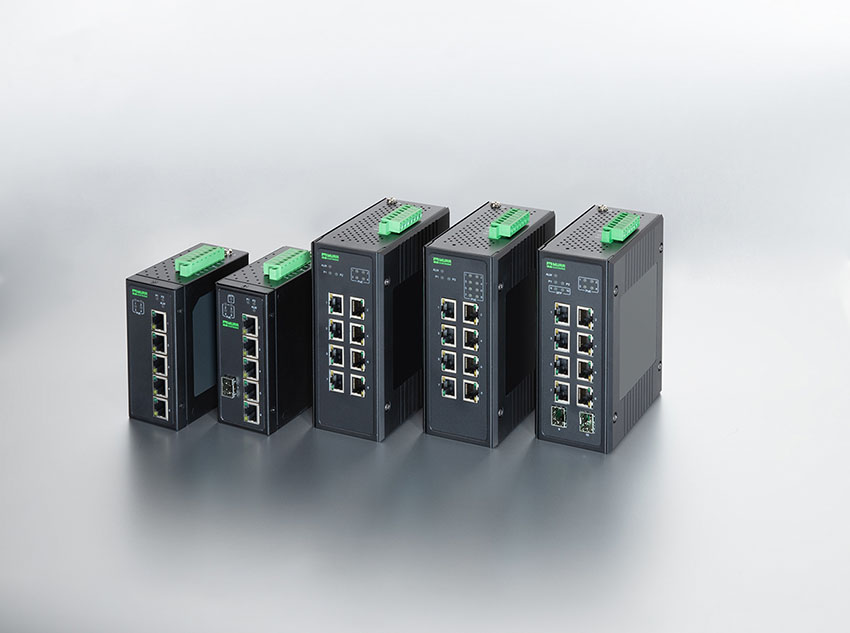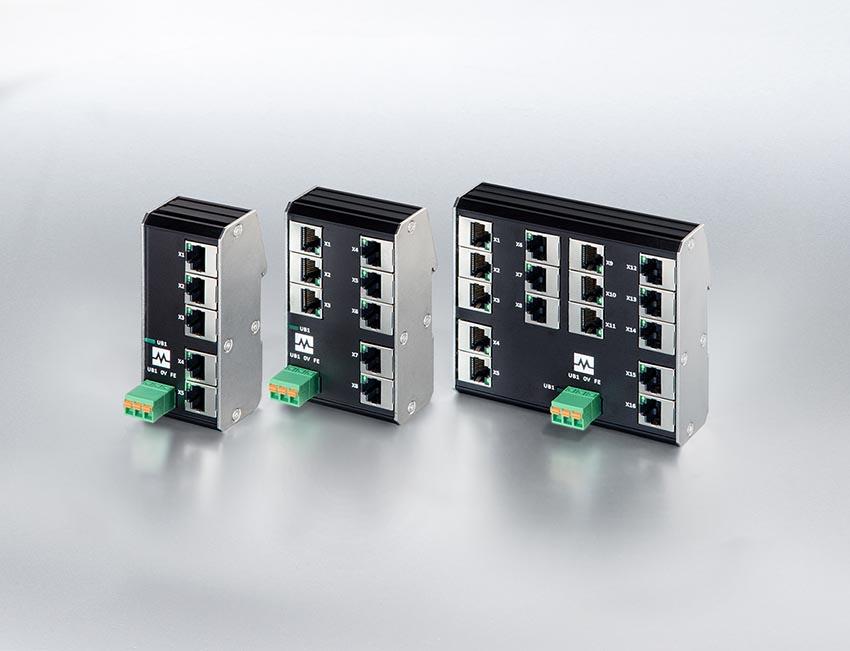How switches can revolutionize industrial network technology
Misunderstandings can often occur in interpersonal communication, but in industrial communication networks errors can have far more drastic effects. In this article we’ll talk about how to coordinate technology, processes and costs and how to optimize industrial networks with switches.
Digital channels are becoming an increasingly popular means of communication. Messenger services have long replaced postcards and even telephone conversations are more and more being held via Zoom or other service providers. Lately, thousands of people from all over the world have been using Clubhouse to talk to each other live about a wide variety of different subjects. There is also naturally a similar trend occurring in the industrial sector. Machines and systems are increasingly communicating digitally. Your networks are the lifeline for data streams, so to speak.
Something that is essential for ensuring a successful communication is an equally successful digitization. This is where network technology comes in.
Companies today face many different challenges, including having to adapt quickly, keep costs low and bring the expansion of the IoT and globalization of production under one roof. In order to achieve all this, their network technology needs to give a helping hand. A network must be reliable and loadable; if it isn’t the consequences can be devastating. According to a study carried out by the consultancy company Gartner, the average cost of network downtime is estimated to be around $ 5,600 (over € 4,600) per minute. This adds up to over € 270,000 per hour.
Switch to a system and needs orientation
If you want to find out how to secure and use your network in the best possible way, look no further. Individual factors help to determine the right network topology for you. A practical solution is switches. Switches are intelligent infrastructure components that read the incoming data and send it to the port with the corresponding receiver. If you do decide to use switches you can choose to work with either “unmanaged” or “managed” switches. The performance of the switches and components, and therefore also the network performance, differs depending on what you choose.
Unmanaged switches cover all basic functionalities. They allow ethernet devices to communicate with each other through network connections and expand the network by adding additional ports. However, unmanaged switches don’t offer any intelligent functions and can’t control network traffic, to do this you need to use managed switches. They take on important tasks when it comes to error analyses, network diagnoses or redundancy mechanisms. They optimize data transfer but also increase the amount of configuration work needed and the overall costs. One major benefit of managed switches, however, is that they offer more control in the network and help to protect it against things such as remote access.

So, what do you want to achieve? Cabling should be as flexible as possible and installation solutions less complex. In addition, the connection to network analysis tools or integrated web servers should be uncomplicated. There’s also nothing wrong with moving the coupling level into the field and reduce space in the control cabinet.
The networked branches of the tree
While we’re on the subject of saving, with Power over Ethernet – or PoE for short – you can combine the two cables that transfer data and ensure the energy supply into one. This is the method often used to supply PoE cameras or PoE Panel PCs. A prerequisite for this is PoE switches, such as the TREE PoE switch from Murrelektronik, which support this timesaving wiring technology. One major advantage of PoE is that it doesn’t require any special cables. Standard cables with eight strands in combination with RJ45 connectors is sufficient. Depending on the application, this method can also save power supplies.
Small but powerful
New applications can also be achieved with switches that have particularly small dimensions. Switches such as these are ideal for use in self-propelled transport systems (AGV), as the switches can be affixed directly to the wall. They can also be installed in small junction boxes and switch cabinets with a low overall depth. At Murrelektronik, the Xenterra series of unmanaged switches has been particularly successful.

Greater efficiency, greater productivity
Easy, quick, efficient and with maximum productivity – that’s how companies want to work, and it helps if the network structures are as efficient as possible. Industrial networks can be put into operation quickly and with high availability. With the Xelity 10 TX switch, you get a reliable data communication that is decentralized and switch cabinet-free. You can achieve a decentralized data management for the Internet of Things (IoT), for example, with the 10 TX IP 67 switch from the Xelity series. This manageable switch makes networks fail-safe, and it provides ten ports in a very small but robust IP67 metal housing.
Using switches in the right way can also perfect the industrial network. Like with interpersonal communication, it’s simply a matter of paying attention to individual characteristics, determining what the person you’re communicating with needs and networking with a system – without postcards.
https://www.murrelektronik.com/highlights/network-technology/
https://shop.murrelektronik.at/en/Electronics-in-the-Control-Cabinet/Switches/
